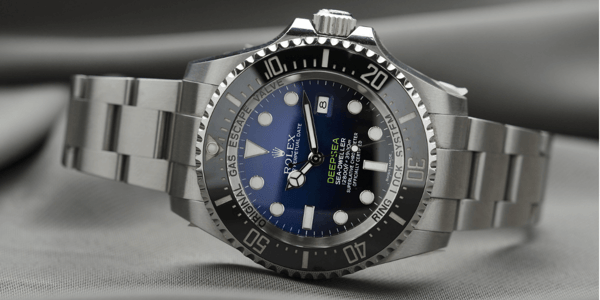Last December, Goldman Sachs cut their forecast of luxury sales to half of what 2018 produced.
If you're in the business of selling luxury products, this is cause for concern. Having lower estimated sales means less growth for your business. It means being stagnant, and that can be a death sentence for companies.
But when your income relies on selling products people want rather than need, you have to be on your marketing game. With a few simple tips for marketing luxury products, you may find 2019 to be one of your best years yet.
Marketing Luxury Products in 2019
One key thing has changed in the luxury marketing world this year, and it's the need for an online presence.
A study by McKinsey found 45% of luxury purchases are influenced by what shoppers find online. Given the value of Inbound marketing and its capability to provide immense amounts of worth to customers, engaging consumers on digital platforms is essential to seeing growth.
But even with websites and social media helping your cause, you can't neglect the crucial elements of marketing luxury products to have your strategy firing on all cylinders.
1. Understand Your Consumer
Media agency, Mindshare North America, conducted a study and categorized luxury consumers into five groups: Strivers, Trendsetters, Aesthetes, Only the Best, and Comfort First.
Of course, these are generalized groups, but they stand as a decent example for status-based marketing.
For one, the Strivers are driven by the recognition of success. They will purchase products because they believe they'll be perceived as successful. It's not about what they think they deserve or what makes them look good. It's the idea that your product will potentially have those who matter to them believe they're successful.
Marketing to these individuals requires you to position your product to guide customers to the fact it will improve their status. This means you're not overtly telling them that everyone will think they're amazing if they make the purchase. You're showing them the benefits in a way that appeals to their need for an increase in status. You want to lead them to their own conclusion.
It's crucial to understand consumer behavior if you're going to maximize your efforts. You need to fine-tune your avatars to reflect their goals, intentions, and the status they hope to gain.
Brainstorm all the reasons someone would want to purchase your product. Think deeper than, "They like nice cars." Plot out the potential status changes your product could fulfill.
Gucci makes exceptional use of its positioning. Knowing that Millennials make up more than half of their clientele, they've positioned their brand as artistic and altruistic through social media campaigns that show off their style and highlight their human qualities. People who purchase these products want those nearest them to believe they hold the same qualities.
2. Focus on the Brand Experience
With so many people being online, it's essential that brands take to the digital space if they want to continue to grow.
Luxury shopping is becoming more mobile, but even though the content is more visible, you need to maintain the perception of exclusivity. Many people would like a Ferrari, but few are walking onto a dealer's lot unless they can afford the purchase. Their belief that they have a lower status keeps them from entering the arena.
Since digital platforms are slowly overtaking physical locations, taking your in-house experience and bringing it online is challenging. People can explore your website from the comfort of their home, diminishing the prestige of exclusivity your brand owns.
To answer this problem, limit access to your site or an app until someone makes a purchase. Use of these features increases the value of your brand concerning the status customers hope to achieve.
If younger consumers make up your target audience, limit the perceived size of your brand. Over half of millennials who purchase luxury goods believe big brands have lost their personal feel. It becomes harder to humanize your brand as you attempt to show the extent of your reach in your brand's messaging.
A great way to engage your current customers is to create a ritual in which they can take part. For instance, Le Labo, a perfume brand, acknowledges that scents deteriorate over time. They hand-blend and prepare every purchase in front of the customer. The attendant places a label on a decanter that the customer must set in their fridge for a week before use. The experience attached to the process engages the customer and creates an attachment to their brand.
You'll have to get creative for online purchases, but sending their order in gift wrap, or including other bonuses that customers will look forward to receiving can be another great way to establish a ritual.
3. Produce the Right Content
Luxury product marketing focuses on the status consumers desire, but it's also the active management of a product's perception. Luxury companies aren't highlighted as the most reliable or the safest option. They're positioned in a way that speaks to the customer's need for status change.
While many companies will push their products, a luxury brand creates a magnetic quality around their offers. Building attraction is the same concept behind Inbound marketing and works when you make your strategy customer-centric. By building so much value towards consumers achieving the status they want, there's no way they can ignore you.
Exclude words like "cheap" and "free" from your ads and calls to action. Removing these words reduces the number of unqualified leads approaching your site, but more importantly, it keeps the perceived value of your brand elevated.
Create content that customers want to share. An additional ritual you can instill would be encouraging new customers to share details about their new purchase by providing a link to articles or graphics. This simultaneously works to build the customer into a brand ambassador of sorts.
When customers share great news or comments about your products, share it over social channels or on your site. Social proof is a great resource and encourages potential buyers to join the circle.
Luxury fashion brand Hermes makes excellent use of their content, publishing on various platforms, including social media, their apps, and on websites. They focus on creating work that's fun and playful, acknowledging you shouldn't take yourself too seriously. But with their pleasant humor, they've created an aura around the brand that meets beauty the same way, and customers want that to be part of their lives.
Building a Strategy Based on Desire
Even though customers have taken to the internet, their need to elevate their perceived status remains. Understanding what truly drives your consumer to make the purchase will give your brand the edge over the competition.
To make better use of your brand's possibilities, you should develop an Inbound marketing plan. Our free ebook, Conquering the Inbound Marketing Mountain, lays out what you need to know about buyer personas, Inbound goal setting, and the components of your editorial calendar. It has everything to get you started on achieving success in your campaign.





